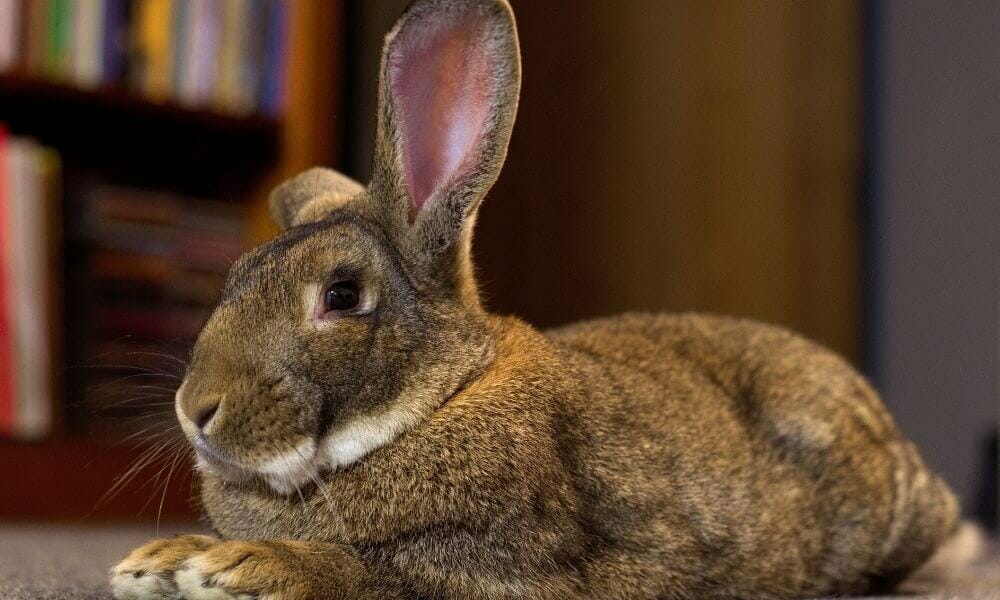Rabbits are so endearingly cute that the mere sight of them warms many a human heart. But beyond their adorable surface, rabbits also are fascinating, intelligent animals with complex needs that are often misunderstood.
Gifting rabbits during the holidays has been popular for generations. But before presenting an irresistible Easter bunny to a loved one, people must understand that rabbit care is so much more than just giving them food and a place to sleep — as well as realizing that rabbits are not suitable companion animals for many people.
Unfortunately, a lot of misconceptions exist about proper rabbit care. The portrayal of rabbits and how to nurture and interact with them is often off the mark in popular culture and doesn’t contribute to people’s understanding of how to adequately protect, feed and play with companion rabbits.
Like many other types of animals, rabbits often are used as promotional pieces in commercial marketing and advertising, with a focus on profit rather than the animals’ well-being.
Social media abounds with examples of this. Recently, the restaurant chain Chop Stop intended to use a Flemish giant rabbit in a promotional eating contest. Billed on social media platforms as “Woman vs. Rabbit,” event organizers apparently did not consider several important facts about how to properly treat a rabbit.
In a photograph advertising the event on Facebook, a woman improperly holds the Flemish giant with her hands clasped around the rabbit’s chest and front paws, leaving the rabbit’s hind legs dangling in the air. That handling can result in dangerous injuries, said Kimberly Ruedger-Wheatfill, one of more than 75 commenters voicing opposition to the event on Chop Stop’s Facebook account.
“The fact that the rabbit is being held without its feet and back supported shows the lack of care and love this person has for this poor rabbit,” she wrote. “The bunny can easily suffer injuries such as a broken back from being handled like this.”
Chop Stop and its CEO Mark Kulkis did not respond to repeated media inquiries for this story, but in a reply to the flood of negative Facebook comments, Chop Stop posted:
“Honey ‘Mega’ Bunny’s owner is a professional rabbit breeder and a member in good standing of the American Rabbit Breeders Association and National Federation of Flemish Giant Rabbit Breeders. He is well aware of dietary restrictions as well as the proper care and handling of these beautiful creatures. Rest assured that we are committed to following all proper procedures in staging this event so the rabbit does not suffer stress or injuries.”
The reference to a rabbit breeder is another issue: Far too many domestic rabbits from breeders end up in overcrowded shelters or are cruelly abandoned in wilderness or urban areas.
For a more enlightened, humane approach to properly caring for and coexisting with rabbits, here’s a list of important things to know.
5 Top Tips for Proper Care of Companion Rabbits
- Adopt, don’t shop. Adopting a pet rabbit from a reputable rescue is the way to go. Do not buy from breeders whose focus on profits creates overpopulation and is a root cause of misery for many rabbits who end up unwanted, abandoned and/or mistreated.
- Spay or neuter your rabbit. This is absolutely essential for pet rabbits. Spaying or neutering makes rabbits easier to train, protects their long-term health, and is necessary for multiple pet rabbits sharing a living space so as not to contribute to overpopulation. Pet stores or shelters don’t always sex a rabbit correctly, so spaying or neutering your rabbit is the safest choice.
- Rabbits need proper support when held. Never pick up a rabbit by the chest, legs or back of the neck. The lower portions of the body must always be supported by a person’s hand and forearms. Here is a more thorough tutorial on proper handling.
- Rabbits need fresh hay and food, not just pellets. Fresh hay — primarily timothy, but other grass hays or oat hay are OK, too — should be the main food source available 24 hours a day, in addition to quality pellets with at least 18% fiber content, water and fresh vegetables. Not all vegetables, however, are safe for rabbits to eat, including iceberg lettuce and broccoli. Here is some additional detailed information on how to properly feed a rabbit.
- Rabbits shouldn’t be kept in a cage for their whole lives. The best, safest place for a pet rabbit to live is indoors, as too many predators roam outside, especially after dark. The House Rabbit Society, a preeminent rescue and education organization, notes that even rabbits in secure outdoor enclosures can be frightened to death if a predator animal confronts them. But neither should rabbits be kept inside a crate for their entire existence in your household. A few noteworthy points on rabbit housing are:
- Rabbits need at least 8 square feet of enclosure space, combined with a minimum 24 square feet of exercise space where they can run and play at least five hours every day for optimal well-being.
- Wire cages can hurt rabbits’ sensitive feet, which don’t have padding like cats’ and dogs’ paws do. A pen enclosure with a litter box in the corner is a better choice.
- Supervision is very important for new pet rabbits when they are out of their enclosure. You wouldn’t want your new rabbit to chew through an electrical cord or munch a hole into your drywall. When a rabbit is familiar with a living space, it is OK to let them freely roam bunny-proofed areas with your supervision.








